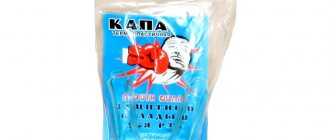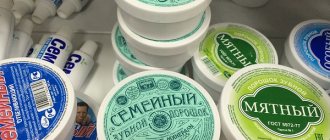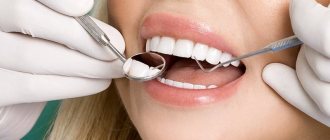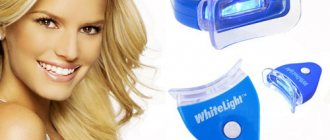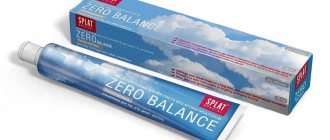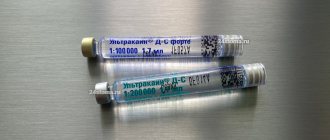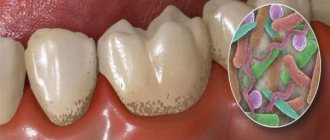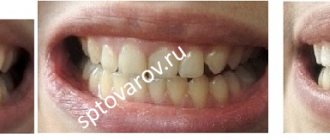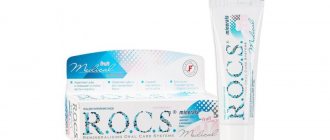Do you do martial arts? Do you use a mouth guard to protect your jaw and teeth while exercising? If not, then it is time to think about “investing” in such equipment.
At first glance, a mouth guard may seem like an insignificant part of your training arsenal. Your first impression of using it may be that you find it awkward. It can be difficult to breathe during exercise—even causing a gag reflex in some people! However, this small element can have a very significant impact on your health.
Whether you are into boxing or Muay Thai, where your face is constantly exposed to pressure and impacts. Even BJJ classes are fraught with accidental elbow strikes and other negative impacts that can even break or knock out a tooth. In short: mouthguards make any of your workouts significantly less traumatic and safer! This applies not even to martial arts, but also to any sports disciplines with interactions between participants.
A mouthguard can prevent all sorts of injuries, from minor ones to those that pose a serious threat to your sporting activities. In some situations, thanks to the use of at least a mouth guard, the risk of serious injury is minimized, unlike those who neglect it.
If you are still not convinced, let's move on to learn more about the benefits of dental protection. Here are five reasons why you should always use a mouthguard during martial arts training:
Why do you need a boxing mouth guard?
Boxing mouthguard - accurately follows the shape of the jaw and protects the oral cavity during a fight. A dental insert is a mandatory element of sports equipment. Without protection, a fighter will not be allowed into the ring.
Why is the plate needed? 1. Protects teeth from knocking out and chipping. 2. Protects the oral cavity from internal cuts. If there is no mouthguard, then the lips and cheeks are torn from the impact of the fangs and sharp edges of the teeth. 3. Prevents tongue biting during impact. 4. Covers gums from cuts. 5. Protects the jaw from dislocations and fractures. 6. Reduces the risk of concussion.
Reasons for the risk of recurrent malocclusion
To understand why you need to wear mouthguards after removing braces, you need to know the basics of the anatomy of the maxillofacial apparatus. Many ignorant patients do not understand why this step cannot be avoided. After all, all the problems are behind us, those around us admire the attractive smile of the owner of straight and white teeth. And then, it turns out, everything can change again for the worse. So what is the reason?
It's all about the structural features of the teeth. The teeth are surrounded by a space in which the ligaments and vessels that hold them in the jaws are located. With the help of braces, the ligaments are stretched and the teeth move in the jaw in the right directions. This is associated with a feeling of pain in the area of the fixed teeth during the period of bite correction. Stretched ligaments strive to return the teeth to their original position, but dental structures interfere with them. However, after removing the braces, nothing prevents the ligamentous apparatus of the teeth from taking their original positions. It is to inhibit this natural process that special devices or mouth guards are used.
Types of boxing guards
The sports industry offers various types of boxing mouthguards. The characteristics can indicate everything from color to type of flavoring. In order not to get confused in this diversity, we will use the classical classification. Let us highlight three main features: type of protection, material, thickness.
Type of protection (purpose)
Based on the type of protection, the plates are divided into two types.
1. Double-sided mouthguard. The protection covers both jaws. This option is recommended for beginners and for training sparring. The peculiarity of the plate is that it must be compressed by two jaws. This makes mouth breathing difficult. Therefore, professionals prefer single-jaw onlays.
2. Single-sided mouthguard. The plate sits tightly on the upper jaw. Doesn't fall out when you open your mouth. Doesn't make breathing difficult. This liner does not cover the lower jaw. Teeth protection is provided by high-tech materials and a special design of the mouth guard.
Type of material
All materials for boxing mouth guards are divided into two groups: thermoplastic and cast (non-thermoplastic). Among thermoplastic protectors, there is a separate type – dental ones.
Molded pads
Sold ready-made. Take it out of the box and put it on your jaw. Convenient, but impractical. It is difficult to select a cast plate taking into account individual characteristics. If the liner dangles, then you can’t count on good protection.
Thermoplastic mouth guards
Thermoplastic material is a semi-finished product. The new mouthguard is heated and “put on the teeth.” The plate cools and takes the exact shape of the jaw.
The anatomical precision of the pad guarantees reliable protection during combat. We will tell you below how to “cook” and put on a mouth guard correctly.
Dental protectors
An individual cast is made of both jaws of the athlete.
Contact a sports dentist. Making a plaster cast. Then, on a special machine, your personal protection is pressed.
The service is not cheap. For a professional boxer, this is not only protection, but also a way to express his extravagance. You can order any color and make a threatening inscription.
Overlay thickness
The thickness of the protective plate depends on the number of layers. Boxing mouthguards are produced in single-layer and multi-layer.
Single layer plates
A single layer plate will provide one level of protection. When choosing such a mouthguard, pay attention to the height of the front side. The front (outer) wall should be high. The high side solves two issues at once.
The first is to protect the gums. Secondly, it redistributes the shock load. I'll say it in other words. Removes part of the shock wave from the front teeth and directs it to the entire gum and palate.
Multi-layer protection
A double-layer mouthguard is the choice of most boxers. Two layers provide double protection.
The outer layer, more rigid, is made of rubber (rubber). Its task is to absorb and “dissipate” the force of the blow.
The inner layer, soft, consists of gel. It does two things. Firstly, it perfectly follows the shape of the jaw and teeth. Secondly, it provides shock absorption during an impact.
Some manufacturers offer three-layer models. The structure is strengthened by special inserts for the outer frame. The inner layer has shock-absorbing cushions.
Cooperation between Dial-Dent and Martial Arts Club No. 1 - everything for the protection and comfort of athletes
Since December 2015, in the field of sports dentistry, Dial-Dent has been collaborating with the network of premium fight clubs “Martial Arts Club No. 1”. The club management drew attention to such an innovative development of Dial-Dent as a neuromuscular protective mouth guard. Many titled fighters of the club, who know a lot about good equipment, choose individual protective boxing mouth guards from Dial-Dent. All mouth guards are manufactured in the dental laboratory of the clinic, taking into account the anatomical characteristics of athletes, and when creating a neuromuscular mouth guard, the neuromuscular status of the fighter is also taken into account. The clinic provides effective support to the “Martial Arts Club No. 1”, which is not limited only to the creation of mouth guards. "Dial-Dent" offers athletes dental care and preventive observation, emergency assistance in case of sports dental injuries (although when using protective mouth guards, the number of such calls will be minimal). More details about the cooperation between Dial-Dent and Martial Arts Club No. 1 in the video:
The best manufacturers of mouth guards for boxing and MMA
There are many companies that make mouthguards for contact sports. But there are brands that are among the best, in any rating.
SHOCK DOCTOR
American brand Shock Doctor, a leader among manufacturers of protective equipment. They specialize in the production of boxing mouth guards from high-tech gel. Even inexpensive models have a three-layer construction.
Manufacturers claim that thanks to high technology, the mouthguard absorbs 40% of impact energy. That's why they produce models with low sides. The protector provides reliable protection to both jaws and does not interfere with conversation.
The manufacturer is so confident in its product that it guarantees compensation of up to 15 thousand dollars to anyone who loses a tooth while using the onlay.
VENUM
The company specializes in the production of protective equipment for professionals. The brand was founded in 2006. The central office is located in Brazil.
The founders of Venum know first-hand what it's like to miss a beat. The origins of the brand are Brazilian jiu-jitsu fighters. The company was created specifically for the production of sports equipment.
Manufacturers Venum maintain close relationships with UFC stars. The best fighters of the Cell are involved in the development of new defense models.
OPRO
The English brand was founded in 1997. The company is a licensed partner of the UFC. This fact says a lot. You can trust such protection.
In addition, all OPRO models have an antibacterial coating. The package includes an antimicrobial box. In 2007, Opro received the Queen's Award for Innovation in Oral Protection.
EVERLAST
The brand was founded in 1910 in the USA. Specializes in the production of sportswear and protective equipment for martial arts.
The campaign's products are chosen by world-famous stars. Muhammad Ali, Mike Tyson and many other boxing geniuses performed in EVERLAST equipment.
Over a hundred years, the company has accumulated vast experience in the development of security elements and has its own patented technologies. For example, boxing gloves contain “EverGEL” - a special gel, the composition of which is kept secret. It protects your wrists by cushioning and dissipating impact energy. The same technologies are used in boxing mouth guards.
To make the famous brand available to the masses, production was moved to China. Affordable prices, plus modern technologies. Summarize and you will understand why Everlast mouthguards are known in all boxing schools.
Why is it important to wear mouthguards after braces are removed?
Most patients are unaware that straightening teeth using braces is only the first stage of complex restorative treatment. However, being encouraged by the results should not prevent you from continuing treatment.
If you neglect the need to resort to wearing removable orthodontic structures, the teeth will again begin to occupy their previous incorrect position.
And then all the work done, money and time spent on straightening teeth will be in vain.
Overconfidence will result in such a patient having to have braces installed again to realign the teeth.
Which mouthguard to choose
When choosing a boxing mouth guard, remember how much a visit to the dentist costs. “Repairing” one tooth will cost more than a good insert.
Production leaders refused to produce double-sided protectors (for both jaws). Therefore, we will not consider them.
Single-sided plates, as you now know, come in one-, two- and three-layer types. Prices for single-layer protectors start from 150 rubles.
A reliable three-layer Everlast mouthguard , with the maximum degree of protection, will cost 1000-1100 rubles.
Need recommendations from MMA fighters - choose Venum . The defense was created by fighters based on personal experience. With such a boxing mouth guard you can go into the ring. Professional protection costs 1200 to 2500 rubles.
If you want a bright design from British aristocrats, check out Opro mouth guards .
The undisputed favorite remains the brand - Shock Doctor . Three-layer protection, a wide price range, warranty obligations - this is the number one policy.
Using a mouthguard saves money
According to the American Dental Association (ADA), an athlete is 60 times more likely to suffer an injury during training and competition with unprotected teeth than with a properly fitted mouthguard. You can roughly guess how much a visit to a competent dentist costs now. This means that investing in this inexpensive safety gear can save you a lot of money. Suffice it to say that the cost of implants can reach several thousand rubles.
Choosing protection for a child
A children's mouthguard is different in size from an adult's. Manufacturers produce two types of earbuds.
Children's – up to 10 years old, for a child under 140 cm tall. Adult – over 10 years old, for an athlete taller than 140 centimeters.
If the mouthguard turns out to be large, then the size is adjusted after “trying on”. Cut the long ends of the plate with a sharp knife or blade. If necessary, the protector can be “cooked” again.
The OPRO company produces special mouth guards for children . Professional orthopedists take part in the development of new models.
If your child has braces, purchase a specialized mouth guard. It’s called “for braces.”
Which is better, a mouth guard or a wire retainer?
Both mouthguards and retainers give the same result, keeping the teeth in the correct position after treatment.
Retainers are cheaper than mouthguards, which often have to be made individually, but while wearing them, problems with maintaining hygiene may arise, and there is a need to regularly contact a specialist.
Mouth guards are easy to use, but require constant care and strict adherence to wearing rules. Only a specialist can tell which design is best for a particular patient.
How to “cook” a boxing mouthguard, instructions (video)
In fact, there is no need to cook the kapa. The workpiece is immersed in hot water (80-90° C) for 30-60 seconds. The exact time and water temperature are indicated in the instructions.
Then the plate is taken out, shaken (or dipped in cold water for 1 second) and put on the teeth.
The plate is pressed on the teeth with your fingers. The insert must be pulled over the gum and pressed tightly against the teeth.
After the protector is placed on the upper jaw, you need to close your teeth and bite down. There is no need to clench your teeth too hard to avoid biting through the protector.
The last step is to immerse the liner in cold water.
To reinforce the information, watch the video. It's easier to see once than to read twice.
How much to wear?
The duration of the retention period (how long the retainers will have to be worn) is calculated by the orthodontist for each patient individually and depends on the following factors:
- The more severe the malocclusion, the longer the aligners will need to be worn.
Difficulty of treatment. The more severe the malocclusion, the longer the aligners will need to be worn.
- Age. The younger the patient, the easier it is to keep the teeth in the desired position and the faster they will finally take it. For minor malocclusions, children sometimes need to wear aligners for only 2-3 hours a day for several months to see improvement, as their maxillofacial apparatus is not yet fully formed and changes easily. Older patients may be forced to use mouth guards throughout their lives to avoid negating the effect of treatment.
- Methods of a specific specialist. Some orthodontists believe that the period of wearing mouth guards should exceed the period of using braces by more than twice. Others are of the opinion that a long retention period is not necessary to maintain the result.
Important: some patients may wear mouth guards longer than the prescribed period to be on the safe side, but they should not be neglected, otherwise the effect of treatment will be lost.
Nuances when wearing mouth guards
There are some inconveniences to wearing mouth guards that patients need to be aware of. Here are the main ones:
- At first, the mouthguards may cause slight discomfort. However, after some time, most patients get used to these devices. Wearing soft aligners does not cause pain (unlike wearing braces).
The only reason for pain during treatment with mouth guards is if the patient has not worn them for some time.
This signals that the teeth are trying to take their original incorrect position.
- At first, wearing mouthguards often causes patients to have defects in the pronunciation of various sounds (usually hissing and whistling).
- Most aligners are made from clear polymers. Wearing them usually remains unnoticed and does not cause a stir among colleagues or relatives.
- Some patients get tired of wearing mouth guards for long periods of time. And then some people allow themselves a little break from using aligners. But in advance I would like to warn patients against such a frivolous attitude towards this stage of treatment.
Even if you don’t wear mouth guards for one day, they begin to have difficulty fitting onto your teeth.
This suggests that in the absence of retaining structures, the teeth immediately begin to “move”, that is, they try to take the wrong position again. Therefore, if you stop wearing mouth guards for braces, this can negate all the efforts and remedies of the entire treatment to straighten your bite.
Mouthguards for night teeth grinding
Bruxism or nighttime teeth grinding is one of the serious diseases that affects approximately 3% of the world's population. The reasons for this have not been fully identified, but the consequences can be very serious - from abrasion of tooth enamel to deformation of the jaw joints. Wearing special mouth guards allows you to protect your teeth from premature wear, relieve muscle tension, and reduce headaches. For the effect to be effective, the mouth guards should be worn for up to 10 hours a day.
Mouthguards for the treatment of teeth grinding are distinguished by the time of their use. There are day guards that are worn during the day; they are transparent and almost invisible.
There are night guards that you wear while you sleep. They may differ in shape from daily mouth guards, but are also comfortable and imperceptible in the mouth.
Teeth whitening trays
There are at-home teeth whitening systems that also use dental trays. Whitening trays can be customized, standard, or disposable. Before using any whitening system, you should visit your dentist to determine what is right for you and will not harm your tooth enamel.
An individual mouthguard is made personally for the patient based on impressions of his teeth. For whitening, a special gel is used that is placed inside the tray.
Whitening at home usually takes longer than at the dentist's office because the gel used at home contains less hydrogen peroxide.
The whitening procedure should be carried out strictly according to the instructions provided. The gel is placed on the inside of the mouth guard, after which the mouth guard is put on and specially pressed to distribute the gel evenly. After putting it on, rinse your mouth with water and wear the mouthguard exactly as long as the instructions say. After removing the whitening tray, you should also rinse your mouth with water.
Care of mouth guards
No particularly complicated care is required for the aligners. However, it is necessary to monitor the condition of the structures and maintain oral hygiene from the first days of wearing this device.
The main thing is to follow a number of rules that should become a habit. Here are the main ones:
- To avoid deformation, mouthguards should not be exposed to high temperatures. It is strictly forbidden to use boiling, steaming, using hot water or drying over hot surfaces to disinfect aligners. It is also not recommended to drink too hot drinks or food while wearing a mouthguard.
To keep the polymer pad clean, it should be cleaned with a regular toothbrush and rinsed with water.
- For cleaning, use the same toothpaste as for brushing your teeth. It is best to clean your aligners in the morning, evening and afternoon, if possible. If the aligners are not cleaned for a long time, an unpleasant taste appears in the mouth, and food debris accumulates under the plastic structures.
- Even if the patient did not wear the mouth guards during the day, it is better to wash and clean them in the evening (to prevent the growth of serious pathogenic bacteria). After all, it is prohibited to use any type of heat treatment for plastic mouthguards.
- Sometimes experts recommend special solutions that disinfect the pad and prevent it from becoming covered with plaque.
- It is very convenient to use special cases for caring for mouthguards and carrying them. The range of such boxes is quite wide; they are compact and have special holes. But thrifty patients use cleanly washed jars of some cream to store their trays. After all, the main thing here is not design, but cleanliness and convenience. In this type of design you can always carry it with you.
